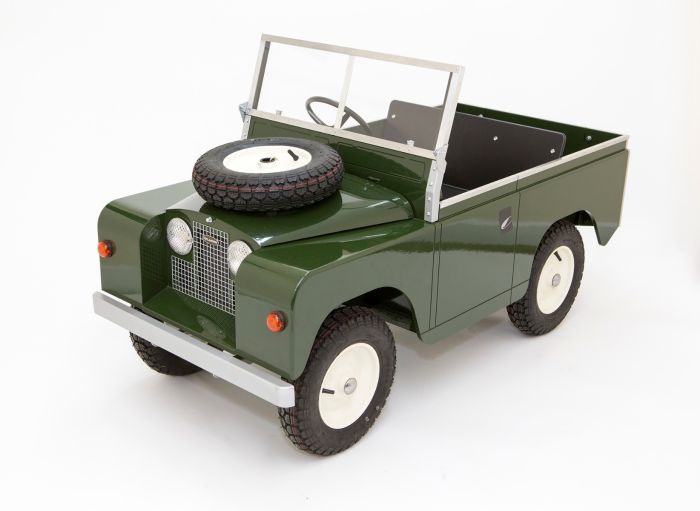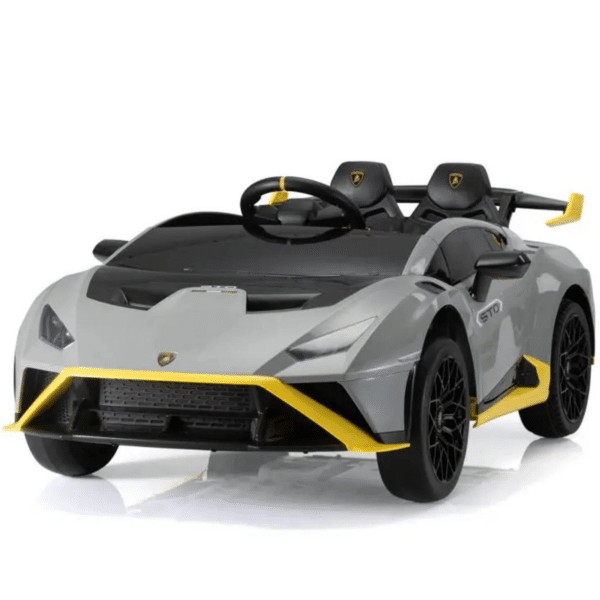Handy Tips To Picking Remote Control Childrens Cars
Handy Tips To Picking Remote Control Childrens Cars
Blog Article
What Safety Features On An On-Road Vehicle Should I Be Looking At? Pros And Pros And
To ensure the safety of your child take into consideration the following features. Here are a few safety features you need to consider.
Pros - Seatbelts keep your child inside the ride-on vehicle, reducing risk of them falling out or being kicked out during play. They provide an added layer of protection, particularly during turns or sudden stops.
Cons - Some rides-on-cars may not have seat belts. This is particularly true for those that are specifically designed for children. In addition, kids may find seat belts uncomfortable or restrictive, leading to resistance or refusing to use them.
Sturdy Construction
Pros: A durable ride-on vehicle made of high-quality materials and durable components is more durable to damage. It ensures long-term safety. It is made to be strong enough to stand up to the demands of the game while ensuring stability.
Cons – Sturdy materials are usually expensive and might not be affordable to some families. The ride-on cars may also be less mobile and maneuverable in the event that they are constructed from heavier materials.
Low Center of Gravity
Pros - Cars with ride-ons that have a low center of gravity are less prone to tipping over, reducing the risk of accidents and injuries. They are more stable and have better balance. stability, particularly during turns or maneuvers.
Cons - Some ride-on cars with a low center of gravity could result in reduced the ability to drive off-road or ground clearance making them less suitable for certain conditions.
Parental Remote Control
Pros: Remote-controlled ride-on cars enable parents to supervise, assist and supervise their child's activities. They offer an additional degree of security and parental control. Parents can prevent collisions, assist in an emergency, or navigate difficult terrain.
Cons: Parental control using a remotes may hinder the autonomy and independence of children, as they rely on the guidance and support of their parents while playing. Remote-controlled models are more expensive than ride-on vehicles that operate by hand.
Speed Limiters
Pros - Ride-on vehicles with speed limiters or speed settings that can be adjusted permit parents to regulate the maximum speed of the car, reducing the risk of collisions or accidents. They can also increase the maximum speed as their child's confidence grows.
Cons - Some children may get used to the slower speeds quickly, causing disappointment and frustration. Speed limiters may not be available on every model or they might require additional features or additional accessories.
Safe Start Technology -
Safe start technology decreases the chance of sudden jerks and lurches, which can startle or even destabilize a child. It gives a more relaxed and safer ride.
Cons - Models with the safe start feature might be more expensive than models that do not. Children may are averse to the gradual acceleration of deceleration to be less interesting as immediate stops and stops.
Visibility Enhancements
Pros - Ride-on vehicles equipped with visible enhancements like working headlights, reflective materials, or taillights increase the visibility of the vehicle. This is especially the case in dimly illuminated areas or conditions. They increase safety because they help make the vehicle more visible to pedestrians or other vehicles.
Cons - Visibility improvements could drain batteries more quickly or complicate ride-on vehicles' designs, leading to more maintenance and malfunction risk.
You can guarantee your child's safety by weighing the advantages and disadvantages of these options. Take a look at the most popular kids ride on cars for blog tips including car on ride, kiddies cars, ride electric car, childrens electric cars, race car toy, toy the car, car for toy, childs ride on car, ride ons, ride electric car and more. . 
What Are The Advantages Of The Ride-On Car?
There are many features included in ride-on cars. They include accessories and features that can help make the experience more enjoyable and real for kids. Here are some common features of ride-on car accessories:
Most ride-on cars come with working headlights. They light up the path improving visibility, especially in low-light areas or during evening driving.
Horn Sounds -
A majority of ride-on cars come with a steering or horn button that emits horn sounds when it is pressed. It allows children to pretend driving and alert others.
MP3 Player Compatibility -
Certain ride-ons can be used with MP3 devices that allow your child to connect their audio device via USB or an Auxiliary port. You can play your favourite songs while driving, which increases the fun factor of the ride-on automobile.
Realistic Engine Noises -
The sound effects are available to ride-on cars that mimic realistic engine sounds such as revving sounds or acceleration sounds. This improves the driving experience for children and allows them to feel as though they are driving in a real car.
Remote Control
Some of the ride-on cars come with a parental controller that lets parents supervise and control their child's vehicle from a distance. Remote control lets parents control, steer or even the car's speed, or even stop the car.
Seat Belts
Some ride-on cars come with seat belts or safety straps to ensure your child's safety. This adds an additional layer of security and helps prevent them from falling during play.
Working Doors
Some ride-on vehicles have doors that are functional that can be opened and closed. This lets children effortlessly enter and exit the vehicle and adds to the real-life driving experience.
Storage Compartment
Certain cars with ride-ons have a trunk in which children can store their small items of play or food. It adds to the variety of playing.
Adjustable Seats -
Certain ride-ons come with seats that are adjustable. They can be moved either forward or backwards to accommodate children of different sizes. Others provide extra legroom for children who are growing.
Remote Emergency Stop Buttons
In addition to the remote control a few ride-on cars also come with an emergency stop button that is controlled by remote. Parents can use this feature to stop their car in the event of emergency or danger.
Car accessories that ride on and features contribute to overall safety and enjoyment. This lets children have fun in their vehicle. View the best read more about remote control childrens cars for website info including car on ride, kiddies cars, a toy car, ride of car, two seater electric cars, ride on toy, ride on car, car for toy, race car toy, ride a toy and more. . 
What Types Of Childrens Remote Controlled Cars Are On The Market? Pros And Pros And
Remote-controlled vehicles for children, also known as RC cars, are offered in a wide range of sizes, styles and prices to meet various budgets and tastes. Here's a breakdown of the pros, cons, and the sizes of remote controlled children's car types.
Electric RC Cars – Battery-powered remote-controlled cars that are suitable for outdoor or indoor use. They are available in many designs, including buggies, trucks and sports cars.
Nitro RC Cars - Gas-powered remote-controlled vehicles that provide greater speeds and performance, however they require more care and experience to run. They're typically bigger and more costly than electric RC vehicles.
Scale Models can be controlled remotely which include vehicles, trucks and planes. Scale models are available in various scales, from 1-10 to 1-24. The larger scales offer more details and authenticity.
Sizes -
The sizes of remote-control cars for children vary from tiny micro-sized versions to larger-scale replicas. The size of a vehicle can impact the performance of it and its speed.
Micro-sized vehicles are compact and lightweight. They are ideal for indoor use, especially with young children. The larger cars have more power and durability and are suitable for outdoor racing and off-road driving.
Prices
The price of a remote control car for children is dependent on the dimensions, features, manufacturer, and the build quality.
Electric and Nitro RC cars in larger scale can cost between $100 and $500.
The price of scale models and hobby grade RC vehicles range from several hundred dollars up to over 1,000 dollars based on their performance and the level of detail.
What are the pros and cons?
Pros -
Children and adults alike will be able to enjoy hours of fun and entertainment through remote-controlled cars.
Skills Development. Operating a RC car lets children develop hand-eye coordination as well as spatial awareness and problem-solving capabilities.
Social Interaction. Cars with RC encourage social interaction, and can be enjoyed by family and friends. families.
Customization - Many RC cars can be customized by utilizing accessories, aftermarket components, upgrades and other accessories to improve performance and appearance.
Cons
Cost - A top-quality model with advanced features can be expensive, especially hobby-grade models.
Children might find it difficult to control the RC cars for the first time.
Maintenance is necessary for owners of RC cars. They should regularly clean, lubricate and perform repairs or replace the parts.
Safety Risks RC cars can pose security risks, such as collisions, falls, as well as electrical dangers, if not utilized in a responsible manner and with adult supervision.
The best remote control children vehicles are ones that offer an educational and exciting experience to kids of all different ages. When selecting the best car for your child however, you must consider several factors, including size, price features, and security. Hobby-grade RCs may be suitable for teenagers and older children, and simpler models can be a good fit for young children and those who are new to the world of. Follow the top McLaren kids car for website examples including two seater electric cars, childrens ride on, kids electric cars, toy and car, toy car toy car, car for toy, car for toy, electric ride on cars, race car toy car, 2 seater electric cars and more. .